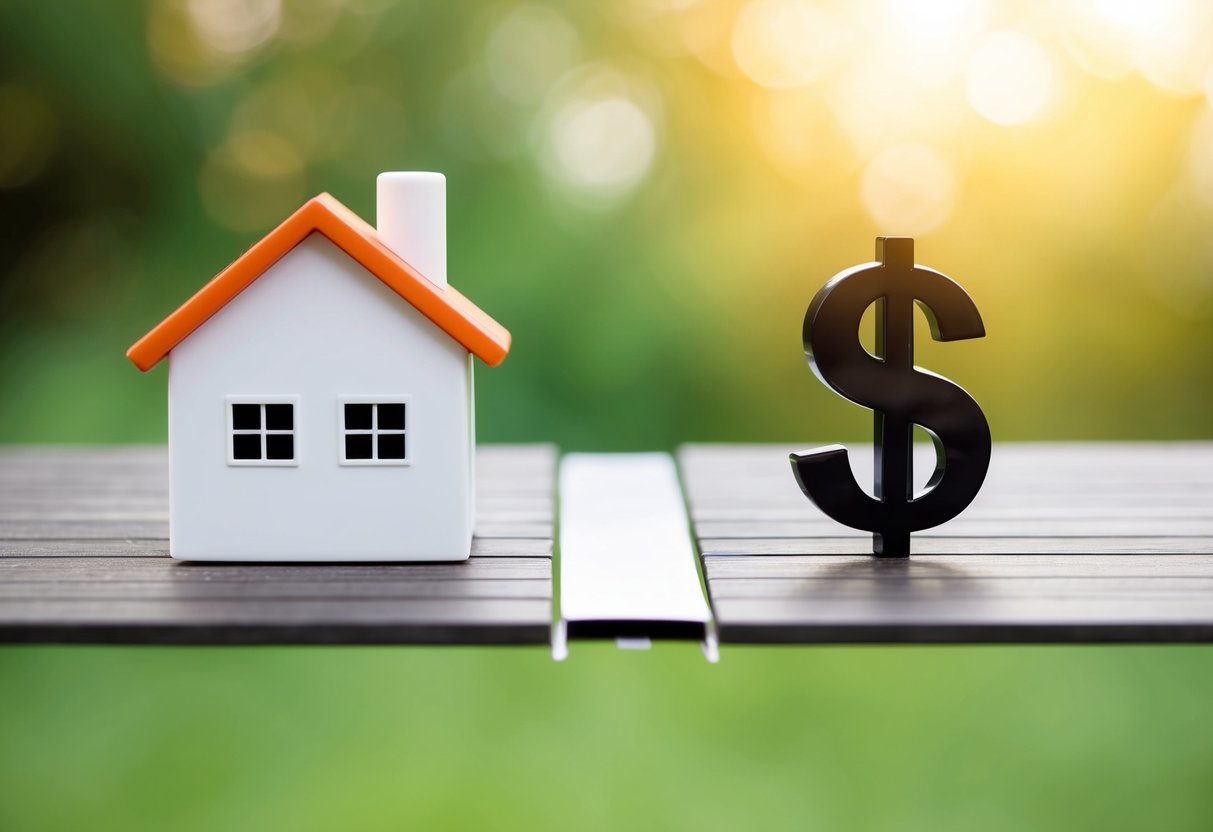In the realm of property investment in Australia, gearing strategies play a critical role in shaping the financial outcomes for investors. Gearing, the process of borrowing capital to invest, comes in two main forms: positive and negative. Positive gearing happens when the income generated from an investment property exceeds the expenses associated with maintaining and financing that property. This leads to a cash surplus which can provide an immediate income stream for investors.

Conversely, negative gearing occurs when the costs of owning a property surpass the rental income derived from it, resulting in a net loss. While this may seem disadvantageous at first glance, it can offer tax benefits as the loss can often be offset against other income, reducing the investor’s taxable income. The choice between positive and negative gearing depends on a range of factors, including cash flow considerations, investment goals, and tolerance for risk. Each strategy holds unique potential for rewards as well as exposure to different risks, both of which must be carefully weighed before making a committed decision.
Key Takeaways
- Gearing strategies can determine an investor’s cash flow and taxation position.
- Positive gearing offers immediate income, while negative gearing can reduce taxable income.
- Choosing a strategy depends on the investor’s objectives, risk comfort, and market conditions.
Fundamentals of Gearing

In the context of property investment, understanding how positive and negative gearing impacts one’s financial position is essential. These concepts are pivotal when evaluating the potential cash flow and tax implications of an investment property.
Defining Positive and Negative Gearing
Positive gearing occurs when an investment property generates rental income that exceeds the sum of all related expenses, inclusive of interest on the loan. The surplus income contributes positively to the investor’s overall cash flow.
In contrast, negative gearing describes a situation where the cost of owning an investment property, including interest payments, surpasses the income it produces. This results in a loss that can reduce the investor’s taxable income, potentially leading to tax benefits.
| Positive Gearing | Negative Gearing | |
|---|---|---|
| Income | Greater than expenses | Less than expenses |
| Cash Flow Impact | Increases investor’s income | Decreases short-term income |
| Taxable Income | Contributes additional income | May reduce taxable income |
How Gearing Affects Cash Flow
The cash flow implications of gearing are straightforward but significantly affect an investor’s strategy. With positive gearing, the property adds to the investor’s income, providing funds that can be redirected into other investments or expenses.
Conversely, negative gearing signifies a deficit between the income generated by the property and its costs. Investors may seek negative gearing for its potential to create tax deductions against other income, effectively reducing their overall taxable income, with the expectation that the property’s value will appreciate over time. However, investors should ensure they have sufficient cash flow to cover the shortfall created by a negatively geared property.
Financial Implications

The financial implications of positive and negative gearing significantly impact an investor’s cash flow and tax obligations. Understanding these effects is crucial for making an informed investment decision.
Impact on Taxable Income
Positive gearing occurs when an investment property’s rental income exceeds its expenses, leading to a profit that adds to the investor’s taxable income. Consequently, this can result in a higher tax liability.
Conversely, negative gearing involves making a loss on an investment property when the cost of owning and managing the property surpasses the income it generates. This loss can be deducted from the investor’s other income, potentially reducing their taxable income.
Tax Deduction and Benefits
Investors employing a negative gearing strategy can benefit from tax deductions. Deductible expenses can include mortgage interest, property maintenance, and management fees. The ability to deduct these losses can make an investment with a negative cash flow more appealing.
For properties that are positively geared, while there may be fewer immediate tax deductions, the property is generating a profit which can be reinvested or used to cover other expenses.
Understanding Capital Growth
Capital growth is a key consideration in property investment. Properties that experience capital gains can offset the lack of immediate cash flow in a negatively geared investment when sold at a profit. Importantly, capital gains tax applies to the profit made from the sale of an investment property, which can affect the overall yield of the investment.
Investors often aim for long-term capital growth with negatively geared properties, whereas positive gearing provides immediate income, which might come with limited capital appreciation potential. Each approach affects an investor’s financial outcome differently and must suit their financial circumstances and objectives.
Risks and Rewards

When considering investment strategies in property, investors weigh the potential risks against possible rewards. The two common strategies are negative gearing and positive gearing, each carrying its own set of implications for risk and return.
Evaluating Investment Risks
Negative gearing: An investor may face financial risk if the property’s expenses exceed its rental income, leading to a cash flow shortfall that must be covered by the investor’s other income. The long-term expectation is often capital appreciation, but if property values fail to rise, the strategy can result in a loss.
- Market fluctuations: A downturn can significantly amplify risks, especially if rental income decreases or interest rates rise.
- Cash flow pressure: Ongoing losses necessitate stable outside income to manage the gap between rental income and property expenses.
Positive gearing: This strategy generally involves lower financial risk since the property generates more income than it costs to maintain. However, the investor must be prepared to pay higher tax rates on the additional income.
- Interest changes: An increase in interest rates can reduce cash flow and turn a positively geared property into a negatively geared situation.
- Rental stability: Consistent tenancy is vital to maintain positive cash flow; vacancies can quickly erode profits.
Comparing Returns from Different Strategies
Negative gearing may allow investors to benefit from tax deductions for the losses incurred, which can improve the investment’s yield in the context of the investor’s overall tax situation.
- Potential for higher capital gains: If the property value appreciates, the eventual sale can realise significant profit, potentially offsetting the cumulative losses.
Positive gearing offers immediate benefits through a steady income stream, typically resulting in a more predictable return rate compared to negative gearing.
- Stable income: A positively geared property provides regular surplus cash, enhancing the investor’s income.
- Yield considerations: The yield, or the rate of return from investment, tends to be clearer from the outset with positive gearing.
Property Management
In considering the ramifications of positive and negative gearing on investment properties, the nuances of property management become pivotal. A discerning investor acknowledges that operational costs and tenant relations directly affect their rental return.
Operational Costs and Repairs
The investor is responsible for the operational costs of their rental property, which encompasses routine expenses and repairs. These costs can significantly influence the overall profitability of the property. For instance:
Routine Expenses:
- Council rates
- Insurance
- Property management fees
- Strata fees (if applicable)
Repair Costs:
- Emergency repairs (e.g., plumbing issues)
- Ongoing maintenance (e.g., painting, appliance servicing)
An investment property with high operational demands might detract from the anticipated rental income, pushing it closer to, or further into, a negatively geared position, especially if rental income does not offset these expenditures.
Tenant Management and Rental Income
Effective tenant management is essential to maintain a steady stream of rental income and to ensure the property remains a viable investment. The key aspects include:
- Appropriate tenant selection to minimise vacancy period.
- Regular rent reviews to ensure the rental return is aligned with current market conditions.
A property manager typically handles these responsibilities for a management fee, often a percentage of the rental income. While this is an additional expense, their expertise can lead to fewer tenant-related issues and potentially higher and more consistent rental income, factors that contribute positively to the overall gearing of the property.
Market Analysis
This section provides an overview of the current housing market trends and the effects of interest rates, offering insight into their relationship with property investment strategies, such as positive and negative gearing.
Current Housing Market Trends
In recent times, the Australian housing market has shown a trend of increasing property values, although the pace of growth varies significantly between regions and cities. Sydney and Melbourne, for instance, have often experienced higher price growth compared to other capital cities. This upward trajectory in housing prices can affect investors’ decisions, as the potential for capital gains is a significant factor in property investment.
The rental market, meanwhile, demonstrates variable patterns. In some areas, high demand for rentals leads to increased rental yields, while in others, the market may be saturated, putting downward pressure on rent prices. These conditions impact whether an investment property can be positively or negatively geared.
Interest Rates and Their Effects
Interest rates set by the Reserve Bank of Australia (RBA) have a profound impact on property investors’ strategies. Lower interest rates tend to make borrowing more affordable, which can drive up both demand for housing and housing prices, as investors find it easier to enter the market. Conversely, higher interest rates may dampen investment activity as borrowing costs rise.
For property investments:
- Positive gearing occurs when the income from a property, typically rent, surpasses the costs associated with maintaining the investment, including the interest on the mortgage.
- Negative gearing is when these costs exceed rental income, potentially providing tax benefits as the loss can be offset against other income.
Investors pay close attention to interest rates, as even a small rate change can significantly affect their return on investment and cash flow. In a context of fluctuating interest rates, careful market analysis is crucial for an investor to determine the most beneficial gearing strategy.
Strategic Investment Planning
Strategic investment planning for property investors revolves around tailoring their investment strategy to meet specific financial goals and constructing a balanced investment portfolio. This section explores how aligning gearing with those financial goals and building diversity within one’s investment portfolio are key components in the strategy.
Aligning Gearing with Financial Goals
Investors must decide whether to utilise negative or positive gearing for their investment properties. Negative gearing occurs when the investment property’s expenses, including interest on the loan, exceed the rental income, potentially allowing investors to claim a tax deduction on the loss. This approach may be more suitable for investors aiming for long-term capital growth, where they anticipate the property’s value to increase over time, compensating for the initial losses. On the contrary, positive gearing happens when a property’s rental income surpasses its expenses, offering investors immediate cash flow that could be used to cover the property’s costs or be reinvested.
Building a Diverse Investment Portfolio
A diverse investment portfolio is vital for mitigating risks and ensuring financial sustainability. For property investors, this means not putting all their capital into one investment property but spreading it across various property types and locations. The balance between negatively geared and positively geared properties can provide both steady cash flow and potential for capital growth.
| Gearing Type | Cash Flow Impact | Long-term Objective |
|---|---|---|
| Negative Gearing | Lower initial cash flow; potential tax benefits | Capital growth |
| Positive Gearing | Immediate positive cash flow | Steady income and financial stability |
Investors should match their choice of gearing to their stage in life, income levels, and risk tolerance, thus aligning with their broader financial goals. Whether they opt for negative or positive gearing, the decision should integrate seamlessly into their overall investment portfolio strategy, ensuring that each property contributes to their desired financial outcomes.
Legal and Accounting Considerations

When navigating the realms of positive and negative gearing, investors must be well-versed in the complexities of tax legislation and the importance of enlisting professional advice. These components are crucial for lawful compliance and optimal financial outcomes.
Understanding Tax Legislation
In the context of Australian property investment, tax legislation plays a pivotal role. The Australian Taxation Office (ATO) provides specific guidelines on how rental income and expenses are to be reported. For positive gearing, where income from the property exceeds the expenses, the surplus is considered taxable income. Conversely, negative gearing enables investors to deduct the shortfall, where property expenses exceed income, from their total taxable income, potentially reducing the tax they owe.
Key points:
- Income: All rental income must be declared.
- Deductions: Investors can claim various expenses related to property investment, such as loan interest, maintenance, and management fees.
- Capital Gains Tax (CGT): This tax is applicable when a property is sold for a profit.
The Role of Financial Advisers and Accountants
Financial advisers and accountants are instrumental in guiding investors through the intricacies of property investment. They provide tailored advice on effective investment strategies and ensure investors maximise their returns while staying compliant with tax laws.
Investors should seek out qualified professionals who understand:
- Tax legislation: An accountant with expertise in property can assist with maximising legitimate tax deductions.
- Financial planning: A financial adviser helps in aligning the investment with the investor’s overall financial goals and risk profile.
These professionals ensure investors make informed decisions and adhere to all legal requirements, providing a robust framework for managing one’s property investment portfolio.
Long-Term Perspectives

The long-term return on investment property hinges on the balance between cash flow and capital growth, influenced by factors such as market demand and interest rates.
Longevity of Investment Choices
Investors aiming for long-term capital growth may lean towards negative gearing. This strategy typically involves a negative cash flow, as the property’s expenses exceed rental income — a deliberate choice underpinned by the expectation of property value appreciation in high-demand areas. The investor absorbs short-term losses, which can be offset against other income for tax purposes, and foresees long-term gains when the property is eventually sold at a higher price.
However, positive gearing occurs when an investment property generates surplus income; the rent received surpasses the costs of maintaining the property, including interest on the mortgage. These properties can provide investors with a regular income stream, which might be reinvested or used to cushion personal finances.
Preparation for Rate Rises and Market Shifts
Investors should be prepared for fluctuations in interest rates and property market dynamics. With rate rises, negatively geared properties might see an increase in holding costs, worsening the negative cash flow. In contrast, positively geared investments might better absorb interest rate rises due to their surplus income, albeit their return could diminish.
Market shifts, such as changes in demand, also play a crucial role. Should the area surrounding a negatively geared property witness strong demand and limited supply over time, the long-term strategy might pay off. Conversely, if demand dwindles, the anticipated capital growth may not realise, elevating the risk profile of the investment.
In both gearing strategies, investors should be aware of the associated risks and have contingency plans to withstand market variability and ensure the sustainability of their investment choice.
Conclusion

In the context of Australia’s property market, investors must understand the implications of both positive and negative gearing as part of their investment strategy.
Positive gearing occurs when the income from a property, typically rent, exceeds the expenses, such as mortgage repayments, maintenance and management costs. The immediate benefit is a stream of income that can be used to cover the investment cost or supplement the investor’s income. This strategy may align with financial goals that prioritise ongoing revenue growth and lower risk exposure.
On the other hand, negative gearing is reflected when a property’s costs surpass the rental income it generates. The investor faces a loss that can be deducted against their taxable income. While this may indicate a short-term loss, the strategy is often employed with the anticipation of capital gains. As a property’s value increases over time, the investor can potentially achieve a significant profit upon sale.
Investors in Australia must consider their long-term financial goals and risk tolerance when choosing between positive and negative gearing. Each strategy has unique financial implications and tax considerations:
- Positive gearing can lead to an increase in taxable income.
- Negative gearing allows for tax deductions that can offset other income.
It is essential for investors to conduct comprehensive research or consult with financial advisors to ensure that their choice of gearing strategy aligns with their investment goals and the current economic climate.
Frequently Asked Questions
When it comes to property investment, understanding the financial implications of positive and negative gearing is essential. These commonly asked questions will provide clarity on how each strategy may affect an investor’s financial outcomes and tax situation.
What are the advantages and disadvantages of positive versus negative gearing?
Positive gearing occurs when the income from an investment property surpasses the expenses, leading to a profit. Its key advantage is the immediate cash flow it provides. However, the extra income can increase an investor’s taxable income. Conversely, negative gearing means the costs exceed the income, creating a loss that can be used to reduce taxable income. The disadvantage is the requirement to subsidise losses from other income sources.
How does negative gearing impact an investor’s tax obligations?
Negative gearing can lower an investor’s taxable income, as the losses incurred are often deductible against other income, potentially resulting in a tax refund. However, investors should be aware that tax benefits should not be the sole reason for choosing to negatively gear a property.
Can you provide an example of how positive gearing works in property investment?
If an investor rents out a property for $400 a week and the expenses, including interest on the loan, total $350 a week, the property is positively geared. The investor makes a weekly profit of $50, which can provide a steady stream of income.
What are the potential benefits for an investor utilising negative gearing?
A property is negatively geared when the cost of owning and maintaining it exceeds the income generated. The primary benefit is the ability to claim tax deductions on the shortfall, reducing the investor’s total taxable income. Long-term, the investor may also benefit from capital growth of the property, outweighing the initial losses.
In what circumstances is positive gearing considered to be advantageous?
Positive gearing is particularly advantageous when an investor seeks a regular income from their investment or when the property market is stable, providing consistent rental yields that cover expenses and yield a profit.
What concerns should an investor be aware of when engaging in negative gearing?
One should be prepared for cash flow implications, as the investor will need to cover the shortfall between income and expenses. Additionally, reliance on potential tax refunds can be risky, and negative gearing assumes that the property’s capital value will grow over time, which isn’t guaranteed.









